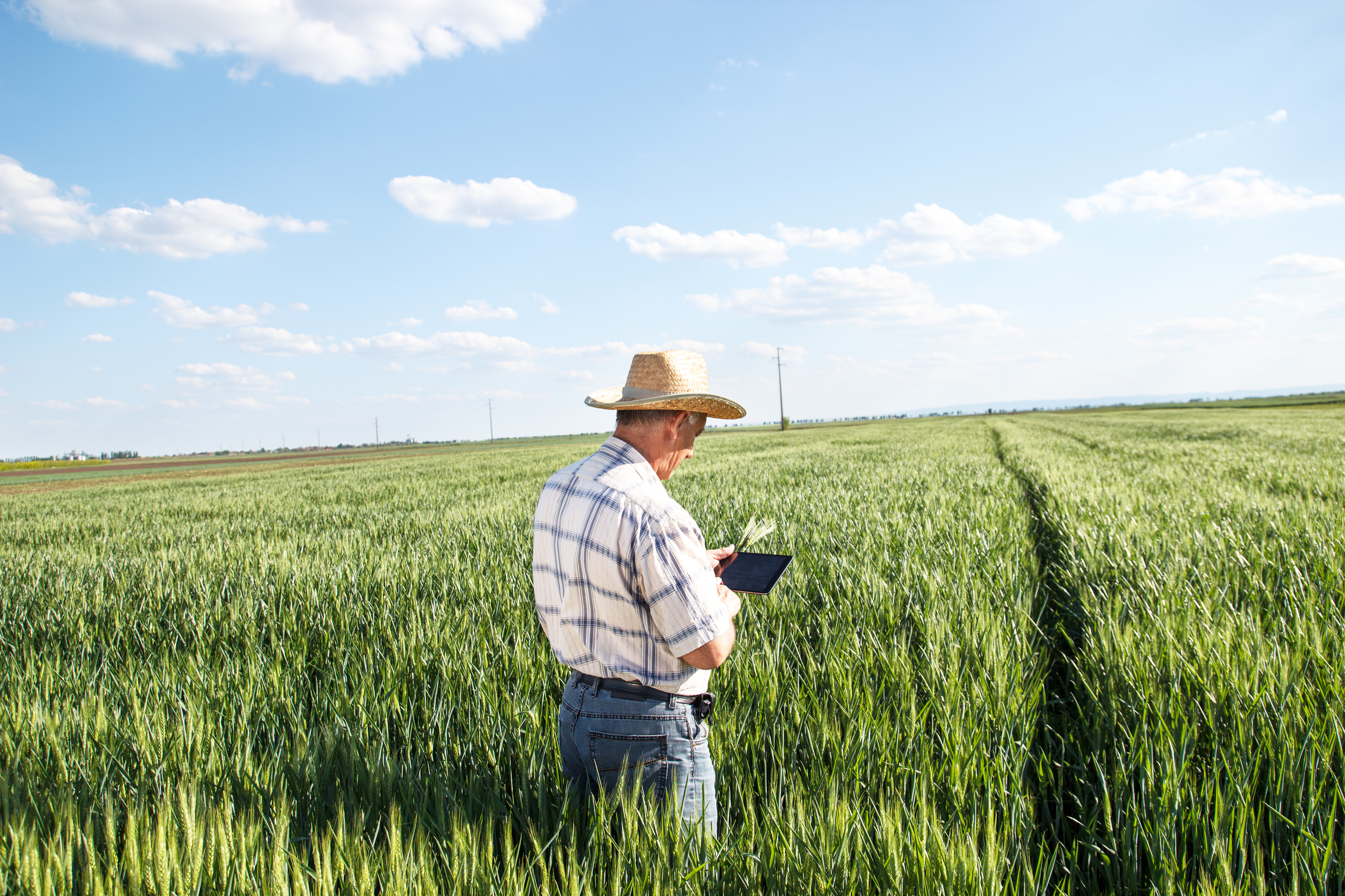The future of farming is in the cloud
A high-tech revolution is happening inside the agriculture industry


For many farmers and those in the agricultural sector, much of their livelihood involves giving up control to the forces of nature: The seasons, the climate patterns, and the precipitation levels are in charge. But what if farmers could take back control with the help of technology — particularly the cloud?
Cloud computing can be used to aggregate data from tools like soil sensors, satellite images, and weather stations to help farmers make better decisions about managing their crops. The cloud's analytic capabilities also aid farmers in understanding their production environment.
"The agriculture industry is utilizing data more than ever before," says Brian Luck, a biological systems engineering professor at the University of Wisconsin-Madison. "Data is gathered on the soil within fields, the plants growing on fields, the weather occurring during growing season, and the machinery used in fields."
The Week
Escape your echo chamber. Get the facts behind the news, plus analysis from multiple perspectives.

Sign up for The Week's Free Newsletters
From our morning news briefing to a weekly Good News Newsletter, get the best of The Week delivered directly to your inbox.
From our morning news briefing to a weekly Good News Newsletter, get the best of The Week delivered directly to your inbox.
This plethora of information can be uploaded to the cloud, which provides enough storage, speed, and computing power to analyze the collected data and package it in a form useful to farmers. "Timely processing of data allows producers to take action within a growing season and correct problems before they become detrimental to yield," Luck says.
In recent years, agricultural companies have been harnessing the power of the cloud to create solutions. For example, farm equipment manufacturer John Deere developed Operations Center, cloud-based software that tracks and monitors the performance of farm vehicles for faster and improved troubleshooting. California startup Farmers Business Network created a system that benchmarks participating farmers' yields against others. The system, built on top of Amazon Web Services, Amazon's cloud computing platform, also provides insight into market prices for seeds and chemicals, giving farmers more buying power.
The cloud is taking over in other areas of the world, too. Beneath the Clapham Common tube station in London are underground tunnels converted into urban farms by Growing Underground, a British farming startup. They use hydroponics, a method that employs low-energy LED lights instead of soil to grow plants. Sensors monitor the LEDs, temperatures, humidity, and other elements within the tunnels and send their data to the cloud, which alerts the Growing Underground team of any problems.
Meanwhile, farmers themselves are getting hands-on with the cloud. Land O'Lakes, a farming cooperative based in Minnesota best known for its dairy products, is using Google's cloud platform because of its integration with Google Maps. Farmers can then visualize their fields on the map and pinpoint exact areas that need more fertilizer or water. By providing decision support and automation, these cloud-based solutions help solve agricultural problems and increase the efficiency and productivity of farms.
A free daily email with the biggest news stories of the day – and the best features from TheWeek.com
But utilizing the cloud for the agricultural sector is not without its issues. Cloud solutions offered by large companies usually come at a high cost, which small-scale farmers can't always afford. Additionally, these cloud solutions are often developed for large farms equipped with fast internet speeds. Most rural farms have slow connections and those in remote areas have no connectivity at all.
"The current limitation for the adoption of cloud computing services is rural internet speeds," says Luck. "Imagine having gigabytes of image data that takes hours — if not days — to get uploaded to the cloud due to slow internet speeds."
"This slow round-trip time to and from the cloud can delay decision making," says Chandra Krintz, a computer science professor at the University of California, Santa Barbara.
Data privacy and security remains the biggest concern with cloud computing services for agriculture. The American Farm Bureau Federation told NPR that farmers should be cautious because cloud services "could threaten farmers' privacy and give the big companies too much power."
"Cloud computing requires detailed information about farm conditions and operations to travel to outside parties, including the cloud provider and third parties that help analyze the data," says Solon Barocas, an information science professor at Cornell University. "This can raise both privacy and security concerns for farmers, as they worry about who may gain access to information that reveals their farming strategies, their yield, their land, and their business operations."
This is one of the issues addressed by Krintz when she developed SmartFarm, an open-source, low-cost, end-to-end decision support and automation system for farm processes. SmartFarm uses sensors to monitor water and nutrient movement, soil conditions, and moisture levels. Data provided by these sensors are processed in the cloud, together with external data, like weather information and satellite images. Farmers can then view the results through an app installed on their smartphones.
"We have designed SmartFarm to have an on-farm component which mirrors what's done in the cloud," Krintz says. "This SmartFarm box is a small computing system that looks and runs like a DVR from your cable company. It provides all of the same analytics, visualization, and decision support functionality that solutions in the cloud do, but the data never has to leave the farm."
By making this small but significant change, Krintz notes that SmartFarm enables farmers to maintain control, ownership, and privacy of their data. She says farmers can still share their data and move it to the cloud in a controlled manner if they wish to do so.
The cloud is a promising technology that can change the way we farm. "It's a key service that allows us to aggregate, analyze, and share data across farms, continents, and the world," says Krintz. "It's an important piece of a much larger puzzle — that of increased farm profitability and sustainable food production."
Indeed, the cloud may very well be the future of farming.
Rina Diane Caballar is a writer based in Wellington, New Zealand. Her work has appeared at BBC Travel, The Atlantic, Quartz, and CityLab, among other outlets.
-
 Political cartoons for December 16
Political cartoons for December 16Cartoons Tuesday’s editorial cartoons include calibrating fonts, Christmas classics, and more
-
 Cryptocurrency and the future of politics
Cryptocurrency and the future of politicsIn The Spotlight From electoral campaigns to government investments, crypto is everywhere and looks like it’s here to stay
-
 Ssh! UK libraries worth travelling for
Ssh! UK libraries worth travelling forThe Week Recommends From architectural delights to a ‘literary oasis’, these are some of the best libraries around the country
